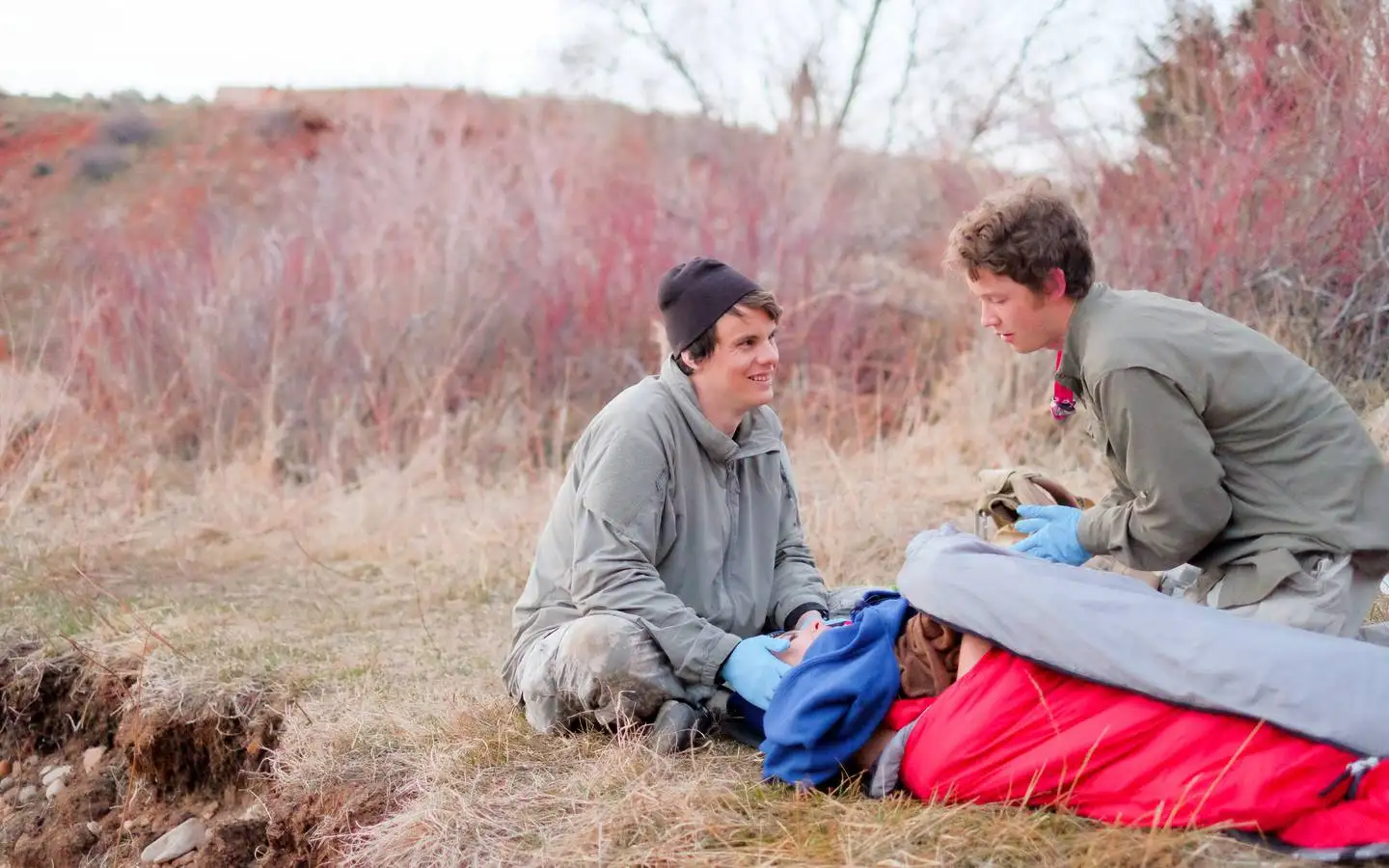The Setting
There you are, hiking with a companion through the San Juan Mountains in Colorado, when suddenly there appears a rider on a pale horse galloping across a meadow. Your attempt to access a vague memory about pale horses passes into a focus on the beauty of the horse and rider, which becomes a stumbling horse and airborne rider whose graceful flight ends in a tuck and roll as the horsewoman lands on her back, tumbles, stands, and runs a few steps before finally collapsing in a heap.
Your companion says “wow” as you fumble for your first aid kit and stumble toward the patient. In the back of your mind you hear the voice of your NOLS Wilderness Medicine instructors saying quietly, “Slow down. Scene size-up.” This kicks in your WFR response. Pausing to survey the scene, you observe that the horse is long gone. You kneel next to the one patient, introduce yourself, and ask her permission to help. She agrees, your friend holds her head, you don your gloves and begin the assessment. She seems alert and responding appropriately, although very anxious and in pain. Her airway is clear and her breathing, while fast, appears adequate and unlabored. Your blood sweep doesn’t find anything; her radial pulse is strong and fast. The weather is warm and the ground dry, so you decide not to move her. You roll back on your heels, take a deep breath, and proceed with your assessment.

SOAP Report
Subjective/Story/Summary
The patient is a 21-year-old female whose chief complaint is pain on the right upper back and shoulder area. We witnessed the patient being thrown from a galloping horse, land on her back, tumble once, rise to her feet, run a few steps, then collapse. We were at the patient’s side within a minute.
Objective
Patient Exam:
Patient was found on her back. The head-to-toe exam revealed a 6” by 6” abrasion over her right scapula without point tenderness or active bleeding. She has good CSM x4 and normal ROM in her right shoulder. She does not think she lost responsiveness. She was wearing a riding helmet. She denies spine pain. No other injuries are found.
Vital Signs
| TIME | 1530 hrs | 1545 hrs | 1630 hrs |
| LOR | A+Ox4 | A+Ox4 | A+Ox4 |
| HR | 120, regular, weak | 100, regular, weak | 88, regular, strong |
| RR | 24, regular, shallow | 22, regular, shallow | 14, regular, easy |
| SCTM | Pale, cool, clammy | Pale, cool, clammy | Pale, warm, dry |
| BP | Radial pulses present | Radial pulses present | Radial pulses present |
| Pupils | PERRL | PERRL | PERRL |
| T° | Not taken | Not taken | Not taken |
History
| Symptoms: | Patient is anxious and nauseated. |
| Allergies: | Denies. |
| Medications: | Denies. |
| Pertinent Hx: | None. |
| Last in/out: | Patient reports normal urine and bowel movement today, ate lunch and drank 2 liters of water today plus some tea. |
| Events: | Denies any dizziness/other symptoms prior to fall from horse. |
Stop...
What is your Assessment and Plan?
Take a few minutes to figure out your own assessment and make a plan.
Don’t cheat—no reading on without answering this first!
